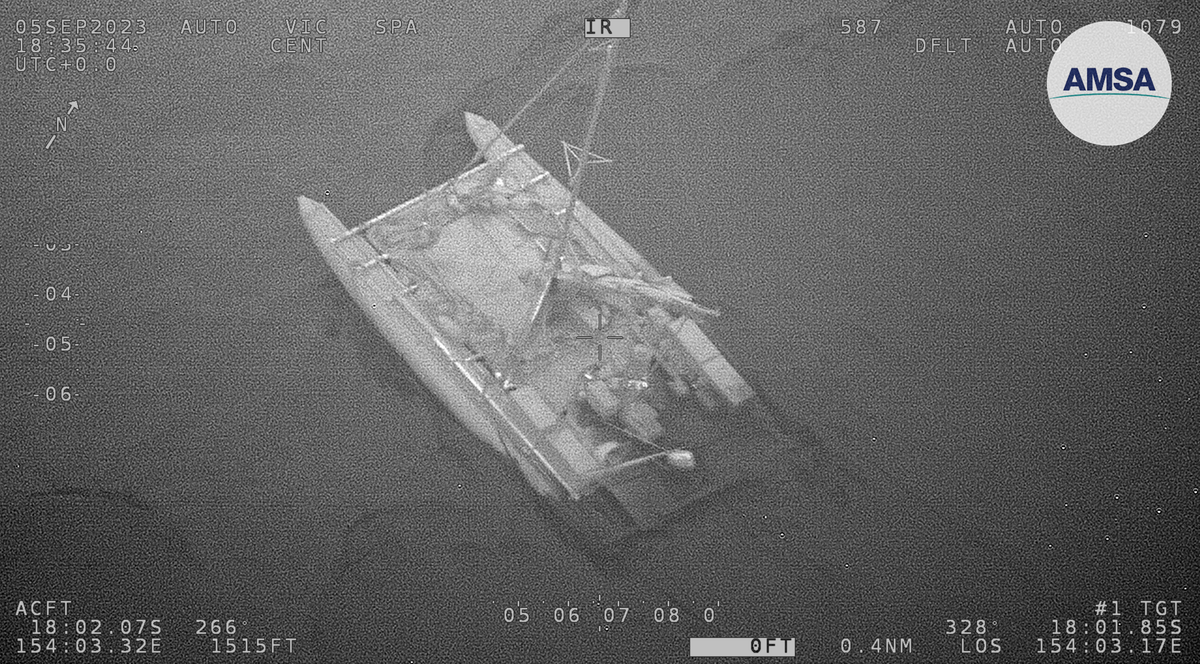
Three people were rescued off the northeastern coast of Australia after multiple shark attacks inflicted damage to their catamaran.
The Australian Maritime Safety Authority (Amsa) said on Wednesday that both the hulls of the vessel, located in the Coral Sea near Cairns, were damaged after several shark attacks.
Satellite images and a video available on the Amsa website showed a substantial portion of the yacht’s stern being ripped apart.
“The vessel departed from Vanuatu and was bound for Cairns (Australia) when contact was established,” Amsa said in a statement.
The yacht was located about 835km (519 miles) southeast of Cairns in the Coral Sea when rescue teams responded to the emergency at about 1.30am on Wednesday.
The nine-metre inflatable catamaran called Tion was reportedly a Russian-registered vessel. The Russian Geographic Society confirmed the catamaran was part of a round-the-world expedition, according to ABC News.
Amsa said in the statement that they sought help from a Panama-flagged vehicle carrier called Dugong Ace and tasked Cairns-based Challenger Rescue Aircraft to the scene, which effectively carried out the rescue operation.
The three passengers – comprising two Russians identified as Evgeny Kovalevsky and Stanislav Beryozkin, and French citizen Vincent Thomas Garate Etienne – are scheduled to reach Brisbane on Thursday.
The spokesperson for the Russian Geographic Society said their expedition commemorated two significant milestones: the 250th anniversary of the birth of explorer Adam Johann von Kruzenstern and the bicentennial celebration of the discovery of Antarctica by Russian explorers.
Catamaran, pictured in Tahiti in June, sailed under a Russian flag— (Reuters)
It commenced its journey from St Petersburg on 1 July 2021, with the objective of setting a record for the longest cruising distance covered on a frame-inflatable sailing trimaran, according to local reports.
However, the sailors were rescued from the trimaran, named Russian Ocean Way, off the coast of Chile in March. The Tion-Russian Ocean Way is the second vessel of the expedition, and it was launched in April.
It was also punctured by sharks in Tahiti in June.
Joseph Zeller, an Amsa responder, was quoted as saying by ABC News that “the sailors were very lucky because they had an emergency distress beacon... which enabled us to tell the most appropriate and fastest response to rescue them”.
“They were very well prepared, they were calm, but of course, they were elated to be rescued.”







